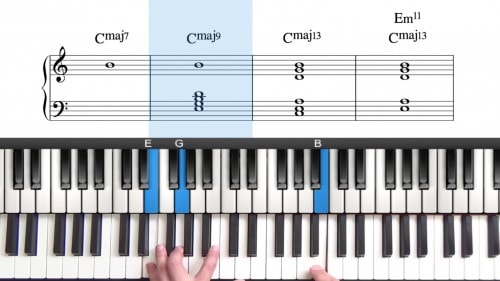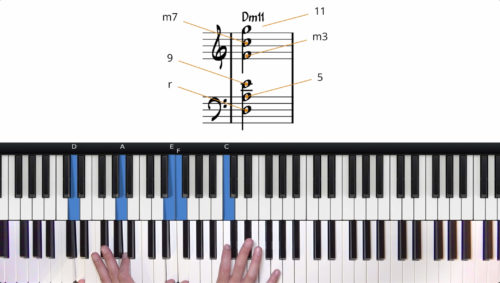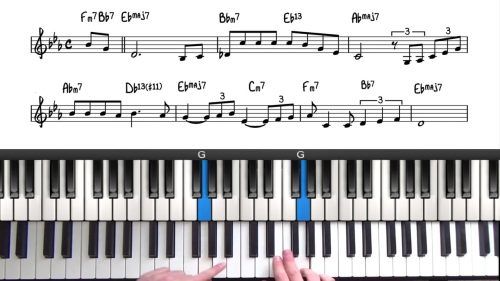Cluster Voicings Tutorial
Cluster voicings are tightly spaced groups of 3 or more notes that act as a chord. What’s interesting about cluster voicings is that they do not contain both of the so called ‘essential chord tones’ which are the 3rd and 7th.
Cluster Voicings generally contain two of the primary chord tones which are (R, 3, 5 or 7) and almost always include one of the upper extensions which are (9, 11 or 13).
Bill Evans was a pioneer in the field or Cluster Voicings and frequently used this type of voicing to achieve rich and interesting sounds for rootless voicings. Cluster voicings have a very unique sound. The compact placement of the notes can also make these voicings sound tense and dissonant which creates an interesting contrast to more consonant, open sounding voicings.
What Are Cluster Voicings?
By now you will be well accustomed to building chords from thirds and fourths but we can also create much richer sounding chords using 2nd intervals. Chords built in this way are called cluster voicings.
In this lesson I’m going to explain what cluster voicings are, I will provide you with formulas on how to construct them and then we will apply these voicings to a few jazz standards.
Cluster Voicings can be built exclusively from second intervals and something to be aware of is that 1 cluster voicing can be used for a variety of different chords. One of the reasons that cluster voicings sound so interesting is the ambiguity in the tonal centre of the chord. When both the 3rd and 7th of the chord aren’t present, the chord has no distinct tonal centre and can therefore be used for many different chords
Practice Tips
-
Cluster Voicings usually span no more than a fifth interval and always include intervals of either half steps, whole steps or both.
-
Cluster voicings typically contain 2 primary chord tones and 1 or more of the upper extensions.
-
The upper extension is usually placed underneath the primary chord tones and separated by an interval of a half step or a whole step.
- Play through the jazz standards you are working on and experiment with cluster voicings.





Great lesson! I’ve never encountered this voicing before and i love the interesting sound – looking forward to experimenting with it. I also love both the tunes you used to demonstrate – could we have dedicated tutorials on those tunes at some point?
Hi Jane,
I’m glad you enjoyed the tutorial.
Be sure to tune into my live seminar tomorrow on the tune “Moon River” where I will be using a lot of these voicings. Add to your calendar here: https://www.pianogroove.com/live-seminars/moon-river-jazz-standard-workshop/
Yes we do have dedicated tutorials on both of these tunes, here they are:
https://www.pianogroove.com/jazz-piano-lessons/my-one-only-love/ https://www.pianogroove.com/jazz-piano-lessons/round-midnight-tutorial/
You might also like this lesson by Tuomo on the tune “Emily” which contains lots of these voicings:
https://www.pianogroove.com/jazz-piano-lessons/emily-tutorial-chords-pdf/
That’s a beautiful tune and arrangement.
Enjoy the lessons!
Cheers, Hayden